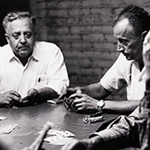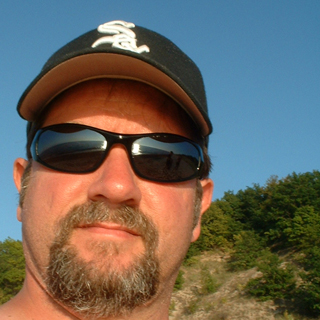Nelson Algren:
The End Is Nothing, The Road Is All
Nelson Algren:
The End Is Nothing, The Road Is All
“Literature is made upon any occasion that a challenge is put to the legal apparatus by conscience in touch with humanity.”
The Film
Nelson Algren: The End is Nothing, the Road is All is an in-depth feature length documentary about one of America's greatest and least understood authors. This never-before-told compelling life story reveals a unique literary voice through rare interviews, historic archival footage and the gritty noirish voice of Algren. Kurt Vonnegut and Studs Terkel, literary giants in their own right, sing songs of praise along with many of his old friends, which makes this film seem like a hymn from the grave. Algren’s touching love affair with Simone de Beauvoir weaves its way through his life and helps to buffer the damaging impact of FBI and CIA surveillance, blacklisting and the rejection of his work by certain academics.
This stylishly produced film embeds us in the 1950s Cold War world when Algren worked. While we anticipate its appeal to cinephiles and general audiences: appearances and interviews with Algren scholars Bettina Drew (Nelson Algren: A Life on the Wild Side), Brooke Horvath (Understanding Algren), Paul Buhle, Meaghan Emery and James Giles provide concise literary, social, and historic perspectives.
Nelson Algren wrote five novels, two collections of short stories, several road books, and countless other stories, reviews, and essays along with the prose poem Chicago: City on the Make. His work spanned six decades and speaks to generations of readers. While his best writing took place over 50 years ago, his focus on the fears and disenchantment with our consumer culture were prophetic and still hit the mark today.
Trailer
Reviews
Algren For Real - review by Jan Herman
Here he is on the big screen at last, an hour and a half of who Nelson Algren was and what he meant. It’s a documentary with the sources — authoritative sources (Kurt Vonnegut and Studs Terkel, for example, who give their personal impressions of the man). Radical sources, too (Paul Buhle for one, who lays out an essential historical perspective). This documentary doesn’t just have the sources, it uses them the way they should be used. Vonnegut, Terkel, Buhle, and the others are allowed to get their say in whole because the filmmakers chose not to produce the cinematic equivalent of a Pop-Tart.
Read the complete article:
https://www.artsjournal.com/herman/2015/04/algren-for-real-the-end-is-nothing-the-road-is-all.html
Chicago Tribune review by Tom Mullaney
"The End Is Nothing ..." opens with the most striking scene of either film: It's nighttime, and older cars are speeding past the downtown Chicago skyline. Over a jazz soundtrack, Algren, invoking Carl Sandburg, speaks: "City of the big grey flannel shoulders / where fog comes on little cat feet / You told me you were brutal / My answer, 'What other city can I buy a judge for five bills and be so sure he'll keep his word. What's so brutal about that?'"
Read the complete article:
https://www.chicagotribune.com/lifestyles/books/ct-prj-nelson-algren-documentaries-20150326-story.html#page=1
Screenings

- World Premiere
- American Documentary Film Festival
- Camelot Theater, Palm Springs, CA

- Chicago Premiere
- Gene Siskel Film Center, Chicago, IL
- 4/4/2015 3:00 PM

- Burlington Book Festival
- University of Vermont, Burlington, VT
- Ira Allen Lecture Hall in Billings Memorial Library
- 9/26/15 3:00 PM
- More Info

- Saint Michael's College, Colchester, VT
- Farrell Room (3rd floor, St. Edmund’s Hall)
- 10/8/15 7:00 PM

- Vermont International Film Festival
- Vermont Filmmakers Showcase
- Main Street Landing Performing Arts Center, Burlington, VT
- 10/23/15 1:00pm
- More Info

- University of Chicago
- Film Studies Center
- Logan Center for the Arts
- 11/20/15 7:00pm
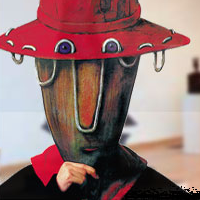
- Society For Arts
- 1112 N. Milwaukee Ave., Chicago
- Saturday 2/27/2016
- Multiple Screenings
- 2:00pm - Algren's Last Night (Cervi/Leming)/The FBI's War on Black America (Ellis/Mueller)
- Donation
- ---------
- 4:00pm - Peace Has No Borders - pre-release (Ellis/Mueller)
- Donation
- ---------
- 7:00pm - Nelson Algren: The End Is Nothing, The Road Is All (Blottner/Davidov/Mueller)
- $10 Admission
- Party Following: DVDs, Books, Wine and Cheese

- Nelson Algren Society of Miller Beach and Miller Beach Arts & Creative District
- Marshall J Gardner Center for the Arts
- 540 S. Lake St., Miller Beach, IN
- Friday 6/24/16 7:00pm
- More Info
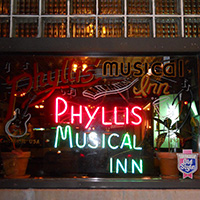
- Algren Returns To Phyllis'
- Phyllis' Musical Inn
- 1800 W. Division St., Chicago, IL
- Saturday, 9/10/16 7:00pm

- Amerikazentrum
- Am Sandtorkai 48 Hafencity
- Hamburg, Germany
- Tuesday 13 Sept 18:00
- Noon In Paris, Eight In Chicago: a discussion with author Douglas Cowie and filmmaker Ilko Davidov
- More Info

- Myriad Editions & Waterstones
- Waterstones, Brighton, UK
- Thursday 15 Sept 19:00
- Noon In Paris, Eight In Chicago: a discussion with author Douglas Cowie
- More Info

- Myriad Editions & Waterstones
- Waterstones - Piccadilly, London, UK
- Wednesday 10 May 19:00
- Noon In Paris, Eight In Chicago: a discussion with author Douglas Cowie
- and film screening.
- More Info

- Help Bring Algren to PBS!
- Algren 616 Stage
- 616 S Lake St, Gary IN (Miller Beach)
- Saturday Aug 28 6-8:30pm CT 2021
- Screenings & Music
- Rare outtakes from our film
- Mary Wisniewski interview w/Russell Banks
- Special thanks to the Nelson Algren Museum of Miller Beach
- More Info
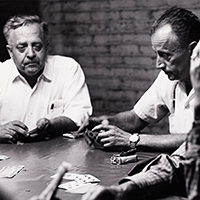
- PBS Watch Party at Phyllis'!
- Phyllis' Musical Inn
- 1800 W. Division St., Chicago, IL
- Friday, Oct 8 8-11pm 2021
- Music by Jamie Wagner
- Film airs at 9:30pm
- More Info
- ----------------------
- Photo: Stephen Deutch
Study Guide
Algren in Texas (Introduction to The Texas Stories of Nelson Algren by Bettina Drew)
Bettina Drew is the author of the critically acclaimed biography Nelson Algren: A Life on the Wild Side.
The Texas Stories by Nelson Algren preserves a unique and devastating view of the Lone Star State during the Depression, a melancholy and explosive world of hoboes, migrant workers, ranch hands, penniless Mexicans, carnival roustabouts, and the dangerous and helpless inhabitants of county jails. These firsthand impressions of impoverished lives formed the philosophical and moral foundation for all of Nelson Algren's later work. Though dubbed "the poet of the Chicago slums" and long known as a naturalistic urban writer, the author of The Man with the Golden Arm and A Walk on the Wild Side actually began his career at the very bottom of the United States in 1932, in the Rio Grande Valley in Texas. The journalism degree he'd earned the year before hadn't helped him find a job in Chicago or Minneapolis or anywhere else in the Midwest in those stagnant days before Roosevelt, so when the cold weather came on, he hitchhiked south to continue his search for newspaper work. He drifted down to New Orleans and spent a few months living in cheap rooms selling coffee and beauty products door to-door; then he rode a long string of boxcars to Texas.
Read the complete Introduction:
Drew_TexasStories.pdf
Read Bettina Drew's "Nelson Algren: An American Outsider" from Nelson Algren: A Collection of Critical Essays:
Drew_AlgrenAmericanOutsider.pdf
Narrative Proximity in the Work of Nelson Algren (essay by Douglas Cowie)
Douglas Cowie was born in Elmhurst, Illinois in 1977. He graduated from Colgate University in 1999, and studied for both an MA and PhD at the University of East Anglia. He is the author of Owen Noone and the Marauder (Canongate 2005), Sing for Life: Tin Pan Alley (Black Hill Press 2013), Sing for Life: Away, You Rolling River (Black Hill Press 2014), as well as various short stories and essays. He teaches in the Department of English at Royal Holloway, University of London. His new novel, a fictional account of the relationship between Nelson Algren and Simone de Beauvoir, will be published in 2016.
My essay, “Narrative Proximity in the Work of Nelson Algren,” appears in Volume 17 of the journal American, British and Canadian Studies. In the process of editing the article I cut a long section that discusses Algren’s first novel, Somebody in Boots. I’ve reproduced that section below. The full article discusses The Man with the Golden Arm and Never Come Morning.
In both Somebody in Boots and The Man with the Golden Arm, [Algren] uses the technique both to control the narrative tension of key scenes. In the scene that introduces Cass and Norah in his first novel, Somebody in Boots, the importance of narrative proximity is twofold; it creates tension in the scene, and in so doing, establishes quickly and effectively the relationship between the two characters. This second point is vital, because these two protagonists are only introduced to each other approximately three-quarters of the way into the novel, and Norah herself has only recently been introduced into the plot.
Read the complete excerpt:
Cowie_NelsonAlgrenABC.pdf
Read the full published essay:
Cowie_NarrativeProximity.pdf
The Red Scare Post-War World and Nelson Algren (interview with Paul Buhle)
Paul Merlyn Buhle was a former Senior Lecturer at Brown University, author or editor of 35 volumes including histories of radicalism in the United States and the Caribbean, studies of popular culture, and a series of nonfiction comic art volumes. He has written extensively about the blacklists and Hollywood.
I think we better start a little ways further back to the early and mid ‘30s because the Depression bottoms out in some respects by the middle of the 1930s, and the New Deal programs and a modest increase in economic growth - very modest, gives people not only a way to stay alive, but a way to be hopeful, and politically, what takes place is that young people who have been involved in these extremely left-wing energetic cultural activities like the John Reed Clubs, they find themselves enjoying the New Deal more than they would have expected and very frequently then make a living in the Works Progress Administration Writers Program or Artists Program, the Theaters Program and so forth. So they find themselves having gone from way on the left to the left of the center, but also seeing their participation in New Deal programs as a sort of transition to a better society, a new society, more egalitarian society, but not exactly the overthrow of capitalism in the fashion that they had imagined in the early Depression.
Read the full interview:
Buhle_RedScare.pdf
View a sampling of the many FBI files used to track Nelson Algren (courtesy of Colin Asher):
AlgrenFiles_01-25.pdf
Links
-

Seven Stories Press
Seven Stories Press derived its name from the seven authors whose works were the foundation of our catalog from the outset. We love each and every one of our authors, but we hold a special place in our heart for the late Nelson Algren, the brilliant author of The Man With the Golden Arm, The Devil’s Stocking, and much more. Read more...
-
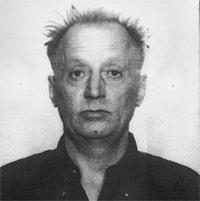
The Nelson Algren Committee
None of Algren's work was in print when the Committee planned its first event in 1989. Today, in addition to the Nelson Algren Fountain (Milwaukee at Ashland); the Algren apartment historical site; and the Birthday Party, the Committee can point to all of Algren's work having been returned to print. Read more...
-

BulletProof Film
BulletProof Film’s production company and post-production facility includes a full-service, seasoned team of writers, producers, directors, editors, cinematographers, animators, music licensing, sound location, and post-production professionals. Read more...
Team
Donors
- Steve Franko
- Andrew W. McClain
- Louis Black
- William E. Blottner
- Jimmie D. Manning
- Robin Lloyd
- Scott L. Sullivan
- David Maddox
- Alan R. Yee
- Marilyn Katz
- Constance Mortell
- Richard D. Moore
- William Masterson
- Adam G. Clement
- Caryn Rogoff
- Glen & Karen Parisian
- John B. Douglas
- Orly Yadin
- Marianna Beck
- Jon Stephen Jost
- Brooke K. Horvath
- Eleanor Lanahan
- Phil Koch
- Laurie R. Glenn
- Nancy Watrous
- Peter Kuttner
- Mary & Jim McCarthy
- Michael T. Martin
- George Walden
- Dana M. Buehner
- Stephen Kopka
- Dr. D. J. Cowie
- Brent D. Bonet
- Joe Deane
- James G. Swanson
- Dan Higgins
- Terrance Alexander
- Tom Weinberg
- Scott M. Szczurek
- Floyd E. Dillman
- Flora C. Johnson
- Richard S. Davis
- Byron G. Harris
- Edmund J. Vosik
- William A. Pelz
- Melissa L. Abraham
- David L. Williams
- Teresa Wiles
- Victoria Auerbach
- Sarah J. Hainds
- David Moody
- Milos Stehlik
- Chad Reid
- Anthony C. Creed
- Jonathan M. Squire
- William Siegel
- David Bechtol
- Nancy Bechtol
- Margaret Waage
- Lawrence Brandenburg
- Fred & Myra Blottner
- John B. Ketterson
- Annick Smith
- Cynthia Kane
- Warren Cohen
- Laurie I. Hewings-Little
- Michael S. Thompson
- Donna Morehead
- Josh Alan Friedman
- Emmett Joyce
- Eric Scholl
- Gary Houston
- George V. Bogdanich
- Jeff Huebner
- Hugh Iglarsh
- Bob Hercules & Julie Johnson
- Deanna Brend
- Kathryn Drury
- Marsha & Richie Pardo
- Lee A. Vida
- Fabio Santesarti
- Jerry Stemach
- Laurence J. Coven
- Judith Alexander
- David Beaton
- Benjamin D. Schulman
- Stephen C. Lee
- Janet A. Goodfellow
- Clara Alcott
- Martha L. Conrad
- Thomas J. Palazzolo
- Warren E. Leming
- Laura Weathered
- Tressa R. Ferrella
- Ryan Bahrke
Contribute now to our film:



Contact
For Information: contact Denis Mueller at nelsonalgren2014@gmail.com



